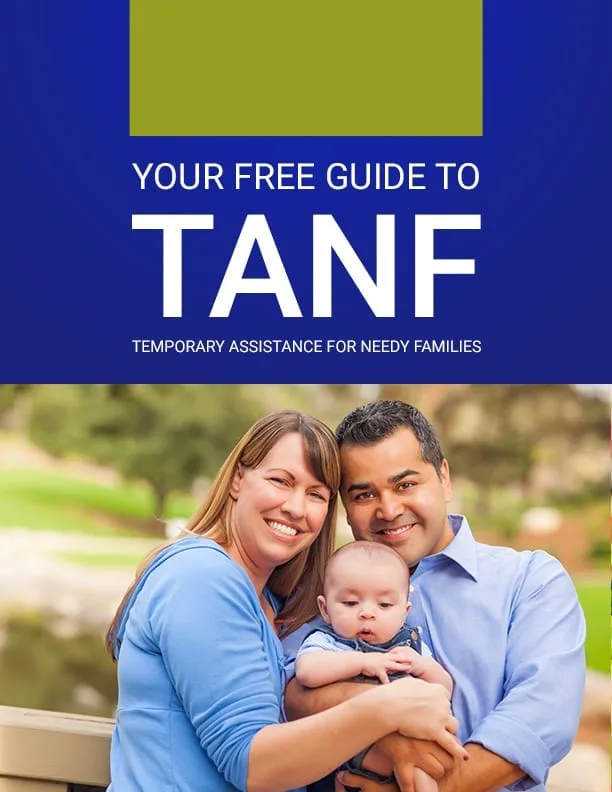Medicare 101: What to Know Based on Age & Eligibility
Medicare 101: What to Know Based on Age & Eligibility
We are privately owned and not affiliated with the government in any way or form.
Medicare is a federal health insurance program designed to provide coverage for hospital care, doctor visits, prescription drugs, and other essential medical services. While it’s commonly associated with individuals aged 65 and older, Medicare also plays a critical role for certain people under 65 who qualify due to disability or specific medical conditions.
Understanding how Medicare works—when you’re eligible, what it covers, and how to enroll—is essential for making informed healthcare decisions. Whether you’re approaching retirement, helping a loved one navigate the process, or dealing with a disability, the rules and options can vary depending on your age and health status.
It’s a common misconception that Medicare is only for seniors. In reality, many younger Americans also rely on Medicare, and others may find themselves exploring Medicaid or ACA marketplace options as a bridge to future Medicare eligibility. This guide is designed to break down Medicare in a way that makes sense for wherever you are in life.
The Four Parts of Medicare

Whether you’re already enrolled in Medicare or preparing to sign up soon, understanding the basics of what’s covered, how enrollment works, and the choices you have can help you get the most from your healthcare coverage.
Medicare is made up of several “parts,” each covering different services:
- Medicare Part A (hospital coverage)
- Medicare Part B (medical insurance)
- Medicare Part C, otherwise known as Medicare Advantage Plans
- Medicare Part D, otherwise known as Drug Coverage Plans
Part A
Part A covers inpatient hospital stays, skilled nursing facility care, hospice, and some home health care. Most people don’t pay a premium for Part A if they or their spouse worked and paid Medicare taxes long enough.
Medicare Part A Premiums
Most Medicare recipients qualify for premium-free Part A coverage. A premium is a payment made by an insured individual in exchange for having coverage. Individuals who have paid Medicare taxes for fewer than 40 work quarters (10 years of work) are required to pay premiums for Medicare Part A coverage. The following are Part A premiums in 2025:
- Those with less than 30 quarters of work credits: $515 monthly
- Those with 30-39 quarters of work credits: $285 monthly
With premium-free Medicare Part A coverage, enrollees are exempt from making these payments. Premium-free Medicare Part A coverage is usually available to enrollees age 65 or older who:
- Already receive retirement benefits from Social Security or the Railroad Retirement Board; or
- Are eligible to receive retirement benefits from Social Security or the Railroad Retirement Board, but have not yet applied; or
- Had (or have a spouse who had) Medicare-covered government employment and paid Medicare taxes for at least 40 work quarters; or
- Are currently married with a spouse who is eligible for premium-free benefits; or
- Are currently divorced but were married for at least 10 years and the ex-spouse is eligible for premium-free benefits; or
- Are currently widowed but were married for at least nine months before the spouse died and the spouse was eligible for premium-free benefits.
Enrollees younger than 65 years of age can also qualify for premium-free Medicare Part A coverage if:
- They have received Social Security or Railroad Retirement Board disability benefits for 24 months.
- They have End-Stage Renal Disease (ESRD).
Other Medicare Part A Costs
Even if you don’t have to pay premiums for Part A, you’ll still need to pay other costs associated with coverage.
Inpatient and Long-Term Hospital Care Costs
Medicare Part A covers inpatient hospital stays, including long-term hospital care (25+ days), inpatient mental health treatment in general hospitals and psychiatric facilities, including room, meals, nursing, therapy, and medications. Costs are based on the length of your stay during a benefit period.
- $1,676 deductible (2025) per benefit period – You pay this before Medicare starts covering services
- Days 1–60: $0 coinsurance per day
- Days 61–90: $419 coinsurance per day
- Days 91–150 (using lifetime reserve days): $838 coinsurance per day
- You only get 60 lifetime reserve days total—once used, they’re gone for good.
- After 150 days: You pay 100% of the costs
A benefit period starts when you’re admitted and ends when you’ve been out of the hospital for 60 days in a row.
Also, note that Medicare only covers 190 days total in psychiatric facilities over your lifetime (no limit at general hospitals). You also pay 20% of Medicare-approved charges for mental health services provided by doctors during your stay.
Skilled Nursing Care
Medicare covers skilled nursing care at certified Skilled Nursing Facilities (SNFs) if certain conditions are met. First, you must stay for a period of at least three days. The admission to the facility must occur within 30 days of leaving the hospital, and the care must be medically necessary and related to the condition.
- Days 1–20: $0
- Days 21–100: $209.50 coinsurance per day (2025)
- Day 101 and beyond: You pay 100% of the cost
Part B
Part B covers outpatient care like doctor visits, preventive services, durable medical equipment, and more. Part B has a monthly premium, which is based on your income.
Medicare Part B Premiums
Unlike Part A, all Medicare recipients must pay monthly premiums for Part B. Those who receive benefits checks through Social Security, the Railroad Retirement Board or the Office of Personnel Management will have their monthly premium payments automatically deducted from their check. All other enrollees will receive bills for premium payments.
- The standard 2025 monthly premium amount is $185.
However, some enrollees with higher incomes may be required to pay higher monthly Part B premiums. This is based on the modified adjusted gross income, or MAGI. Your MAGI is calculated by finding your total income for the entire year and adding back any tax-exempt interest or deductions.
The table below outlines monthly premium amounts for enrollees with incomes higher than $106,000 (or $212,000 for joint tax returns) as shown on their income tax return documents two years prior to when they applied for Medicare.
| Individual Tax Return | Joint Tax Return | Married And Separate Tax Returns | Monthly Premium (2025) |
| $106,000 or less | $212,000 or less | $106,000 or less | $185 |
| Above $106,000 up to $133,000 | above $212,000 up to $266,000 | N/A | $259 |
| Above $133,000 up to $167,000 | Above $266,000 up to $334,000 | N/A | $370 |
| Above $167,000 up to $200,000 | Above $334,000 up to $400,000 | N/A | $480.90 |
| Above $200,000 and less than $500,000 | Above $400,000 and less than $750,000 | Above $106,000 and less than $394,000 | $591.90 |
| $500,000 and greater | $750,000 and greater | $394,000 and greater | $628.90 |
Deductibles and Coinsurance
Medicare Part B enrollees have an annual deductible, which is a set amount of money they pay out of pocket before Medicare pays.
- The annual Part B deductible for 2025 is $257 per year.
Once an enrollee meets this deductible, they are responsible for coinsurance, which is a percentage of healthcare costs that the enrollee pays. The current coinsurance amount is 20 percent. Medicare pays the remainder of the cost. Laboratory services, home health care and depression screening have no copay and are covered 100%.
Enrollees typically pay coinsurance for the following services:
- Doctor visits
- Outpatient therapy
- Durable medical equipment (DME)
Part C
An alternative to Original Medicare (Parts A and B), these are private plans that often bundle in extra benefits like vision, dental, and prescription drug coverage. You still have to enroll in Parts A and B to join a Medicare Advantage plan.
Like a standard health insurance plan, Medicare Part C recipients must stay within a plan’s network to receive benefits. In exchange, they receive more thorough coverage with a lower copayment than standard Medicare typically charges.
There are many different types of Medicare Part C plans available.
- Health Maintenance Organization (HMO) Plans — These plans provide coverage within the company’s network except in the case of emergencies. Typically, you must get a referral to see a specialist. If you see a doctor or practice outside of the network, you will pay a higher cost — in many cases, the full cost — compared to the in-network costs.
- Preferred Provider Organization (PPO) Plans — Like HMO plans, PPO plans request that you stay in-network to receive coverage. However, you may still receive coverage for treatment outside of the network albeit with a higher cost to you. Referrals are not generally required to see a specialist.
- Private Fee-For-Service (PFFS) Plans — PFFS plans are more similar to standard Medicare than other Medicare Advantage plans. You can seek treatment from any Medicare-approved provider that accepts the terms of the plan. Some PFFS plans have networks with lower costs, while others do not. In some cases, PFFS plans may not provide prescription drug coverage. You can enroll in Medicare Part D if your PFFS plan through Medicare Advantage does not include prescription coverage.
- Special Needs Plan (SNP) — These plans are designed for Medicare recipients with specific illnesses or limited incomes. Like HMOs and PPOs, you are generally limited to receiving care within a network. You typically must have a primary care doctor or care coordinator to address treatment plans. SNPs must include Part D coverage. In order to qualify for an SNP, you should meet one of the following requirements:
- You have a chronic illness
- You live in an institution or need nursing care at home
- You qualify for both Medicare and Medicaid
- Medicare Savings Account (MSA) Plans — MSA plans allow you to use a medical savings account combined with a high-deductible plan to receive coverage. If you use MSA, you generally must join a Part D plan as well, unless you already have a Medigap policy with drug coverage.
The availability of Medicare Part C plans depends on the area in which you live. Some areas may offer all, some or none of these types of Part C plans. In addition, there may be several plans available in your area within the same category. Visit medicare.gov/plan-compare and enter your ZIP code to see the plans that are available in your area.

Medicare Part C Expenses
Medicare Part C expenses vary by plan. HMO, PPO, PFFS and SNP plans may charge a monthly premium. All plans will have different co-pays depending on the plan you select.
In addition to the costs associated with your Part C plan, you are still required to pay your Part B premiums. Some Part C plans cover the cost of your Part B premiums or may charge a $0 premium. If you enroll in a MSA plan, you must also pay your Part B premium, but you will not be charged any additional premiums for your Part C plan.
For 2025, there is a federal out-of-pocket limit of $9,350 for Part C plans, not including prescription drug costs.
Part D
Part D helps cover the cost of prescription medications. This is offered through private insurers and can be added to Original Medicare or included in some Medicare Advantage plans.
Medicare Part D is not required; enrollees may choose to enroll in this type of plan if they do not have drug coverage from any other insurance plan.
Like Medicare Part C, drug coverage plans vary in availability based on the area in which an enrollee lives. Part D plans are offered by private insurance companies that work with Medicare to provide drug coverage to Medicare recipients.
Medigap Plans
Medigap is extra insurance you can buy from a private company to help pay for healthcare costs that Original Medicare (Parts A and B) doesn’t fully cover—like copayments, coinsurance, and deductibles. It’s not provided by the government, but by licensed insurance companies.
To be eligible for Medigap, you must:
- Have Medicare Part A and Part B
- Not be enrolled in a Medicare Advantage Plan (Part C)
- Pay a monthly premium to the Medigap insurance provider
- This is on top of your monthly Part B premium
- Buy a plan from a company licensed in your state
To find Medigap plans in your area, use the tool provided on the Medicare website here: https://www.medicare.gov/medigap-supplemental-insurance-plans/#/m?year=2025&lang=en
Medicare Enrollment Periods
- Initial Enrollment Period (IEP): This is a 7-month window that starts 3 months before the month you turn 65, includes your birthday month, and extends 3 months after. Enrolling during this time helps you avoid late penalties.
- General Enrollment Period (GEP): If you miss your IEP, you can enroll between January 1 – March 31 each year, with coverage starting July 1. However, you might face late enrollment penalties.
- Annual Enrollment Period: Each year from October 15 – December 7, you can switch Medicare Advantage or Part D plans. This is your chance to make changes based on your health needs, budget, or if your current plan is changing its coverage.
Differences in Medicare for Pre-Retirees
If you’re nearing your 65th birthday, it can be a great time to start planning your Medicare enrollment. Signing up at the right time can help you avoid late fees and ensure continuous healthcare coverage as you transition out of employer insurance or into retirement.
Most people benefit from enrolling in Medicare during their Initial Enrollment period. You can enroll online at Medicare.gov or through the Social Security Administration (SSA) at ssa.gov or by calling 1-800-772-1213.
What Happens If You Delay Enrollment?
Delaying enrollment can lead to late penalties:
- Part B: A 10% penalty for each 12-month period you delay—added to your premium for as long as you have Part B.
- Part D: A permanent penalty if you go 63 days or more without credible drug coverage after your IEP.
These penalties can add up, so enrolling on time is key unless you qualify for an exception (like employer coverage).
How Employer or Retiree Coverage Affects Timing
Still working at 65 or covered under a spouse’s employer plan? You may be able to delay Medicare without penalty if the employer has 20 or more employees, or if the plan is considered creditable coverage.
Once that coverage ends, you’ll have an 8-month Special Enrollment Period (SEP) to enroll in Medicare without facing penalties.
Here’s a helpful timeline to stay on track:
- 12 Months Before Turning 65
- Learn about Medicare basics
- Talk to your HR department if you’re still working
- Create an account at Medicare.gov
- 6 Months Before
- Review your current coverage and compare it to Medicare options
- Estimate your costs for Medicare Parts A, B, C, and D
- 3 Months Before
- Enroll during your IEP to avoid delays or penalties
- Choose between Original Medicare or Medicare Advantage
- Consider if you need a Part D or Medigap plan
Medicare for Younger People
Medicare isn’t just for people 65 and older. Some people under 65 may also qualify due to a disability or serious medical condition. If you’re a younger adult with specific healthcare needs, understanding your options is key to getting the right coverage and avoiding costly gaps.
How to Qualify for Medicare Under 65
You may be able to enroll in Medicare before age 65 if:
- You receive Social Security Disability Insurance (SSDI)
- You automatically qualify for Medicare after receiving SSDI benefits for 24 months
- You automatically qualify for Medicare after receiving SSDI benefits for 24 months
- You have End-Stage Renal Disease (ESRD)
- Medicare starts after the fourth month of dialysis or earlier if you receive a kidney transplant or train for at-home dialysis
- Medicare starts after the fourth month of dialysis or earlier if you receive a kidney transplant or train for at-home dialysis
- You have Amyotrophic Lateral Sclerosis (ALS/Lou Gehrig’s disease)
- Medicare begins immediately when your SSDI benefits start—no 24-month wait
- Medicare begins immediately when your SSDI benefits start—no 24-month wait
Cost and Coverage Differences for Those Under 65
If you qualify for Medicare under 65, you’ll typically receive the same Part A and Part B coverage as someone who is 65 or older. This means you’ll have access to hospital insurance (Part A) and medical insurance (Part B), covering many essential healthcare services such as inpatient care, doctor visits, and preventive services.
However, one major difference for younger beneficiaries is the availability of Medigap plans. In many states, private insurers are not required to offer Medigap policies to people under 65, even if they’re on Medicare due to a disability. This can make it more difficult to get help with out-of-pocket costs like deductibles and coinsurance, though some states do offer at least one plan option.
Additionally, younger Medicare enrollees with disabilities may face higher premiums for the coverage they can access. Private insurers may charge more for Medigap plans if they offer them at all, and other plan options—like Medicare Advantage—may also come with higher costs or fewer choices compared to what’s available for those over 65.
Alternative Health Insurance Options
If you’re under 65 and don’t yet qualify for Medicare, there are still several ways to access health coverage while you wait or work toward eligibility. These alternatives can help ensure you stay protected from high medical costs and maintain access to necessary care.
Medicaid
Medicaid is one of the most common alternatives for individuals with limited income. It provides free or low-cost health coverage and often includes services like hospital stays, doctor visits, and even long-term care, depending on the state.
Medicaid eligibility is largely income-based and varies from state to state—some states have expanded Medicaid under the Affordable Care Act (ACA), making it easier for more people to qualify. If your income is within the limits set by your state, Medicaid can be a vital bridge to help cover healthcare costs until Medicare eligibility begins.
ACA Marketplace
Another option is to explore ACA Marketplace plans available at HealthCare.gov. These plans are designed for individuals who don’t qualify for Medicare or Medicaid and may offer premium subsidies and cost-sharing reductions based on your income.
The ACA Marketplace offers a range of plan levels—from basic coverage to more comprehensive plans—making it possible to choose an option that fits both your healthcare needs and your budget. Open Enrollment typically occurs once a year between November 1 and January 31, but certain life events (like losing job-based coverage) may qualify you for a Special Enrollment Period.

Continued Coverage
For those who are transitioning between jobs or have recently lost employer-sponsored insurance, COBRA or continued coverage through a former employer may also be an option. Under COBRA, you can keep your previous job-based health insurance for a limited time (usually up to 18 months), but you’ll likely have to pay the full premium yourself—often making it more expensive than other coverage options. However, if keeping your doctors and current network is a priority, COBRA can offer continuity until another plan becomes available.
Each of these alternatives comes with its own benefits, costs, and rules, so it’s worth comparing options carefully to find the right fit for your situation.









